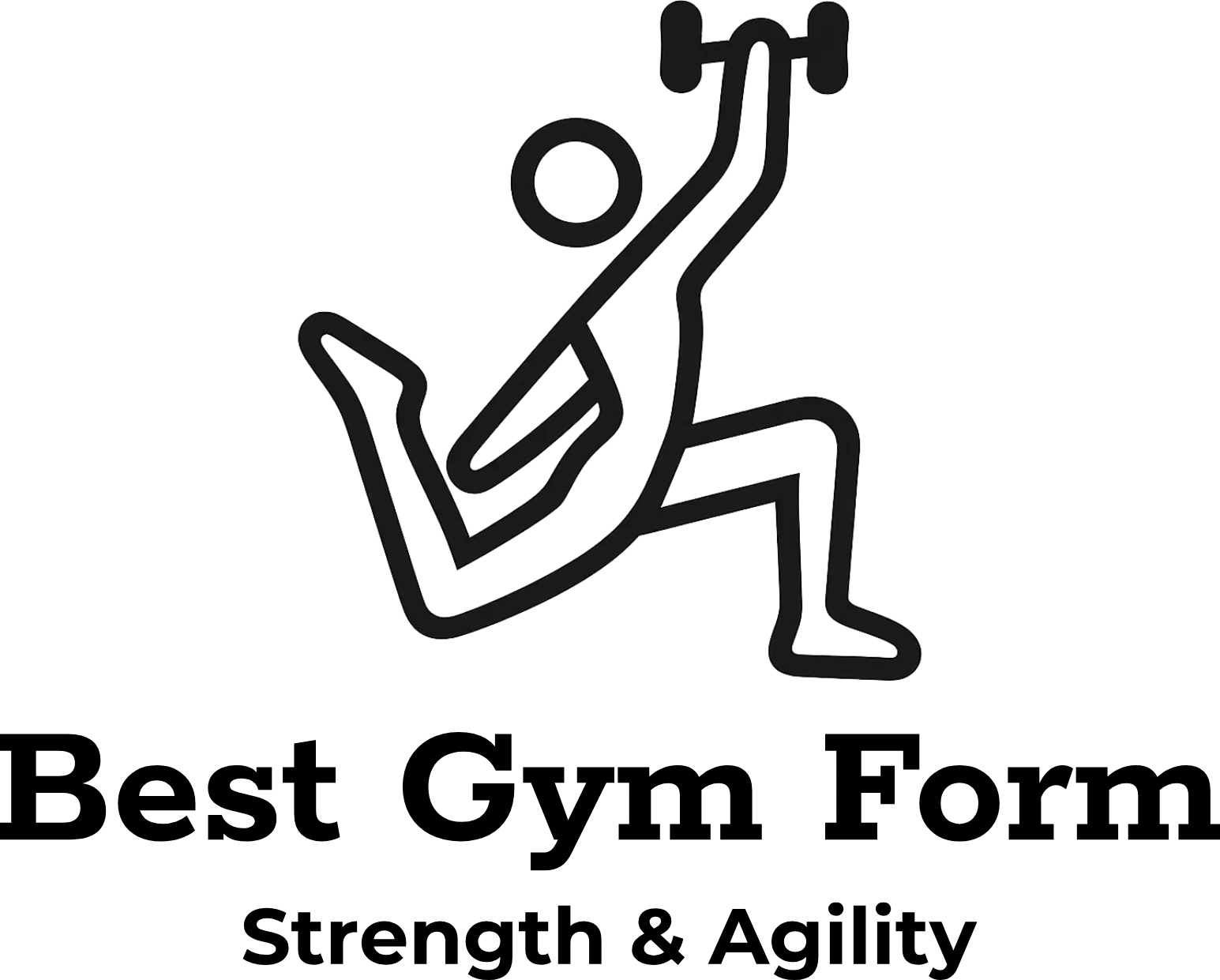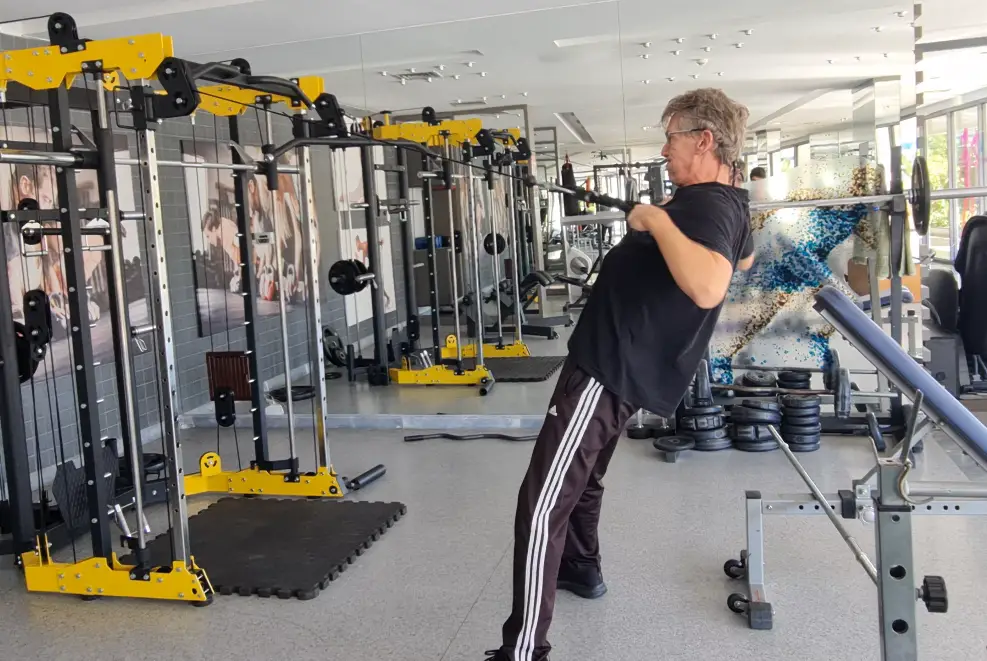All about the Standing High Cable Row
(Back)
BENEFITS & MUSCLES WORKED: Upper Body, Back, Shoulders, Arms
START POSITION: Clip a Tricep Rope attachment to the cable and set the cable height to be about level with the top of your head. Walk backwards so the weight stack is lifted a couple of inches upwards. Then lean backwards with your feet placed wider than Shoulder width. Bring the handle up to the very top of your Chest and flare your elbows. Keep your head and back as straight as possible, and bend your knees slightly so that you can perform the whole exercise with minimum movement of other parts of your body.
NOTES: Difficulty Rating: 72%
It’s best to select lower weights for this exercise and focus on maintaining perfect form. Carrying too much weight will quickly upset your form and stress your lower back and shoulders, possibly causing injury. Keep your head still as you look towards the top of the cable and maintain a straight line between your upper chest and the high point of the attached cable. Breathe out as you pull back and breathe in as you retract the cable.
Engage your upper back muscles by squeezing them together (and inwardly towards your spine. Try to avoid using your biceps and shoulder muscles more than necessary. Tensing your Core muscles might also help you to get a little more pulling power.
Be aware that the Back muscles will fatigue quickly with this exercise, so you may not be able to complete many reps unless you use lighter weights. If you struggle to do at least 10 reps, consider lowering the selected weight.
The Standing High Cable Row is a great exercise to do with high reps and low weights, just like so many other Back exercises. Using high reps with low weights allows you to concentrate on doing perfect form whilst reducing the risk of injury. Most gym injuries are caused by either excessive weight or poor form, or both.
This is a vastly underrated exercise, but it engages multiple vital muscles, which will significantly help with your posture. It also helps protect you from common injuries to the shoulders, neck, and Upper Back areas. It’s a superb addition to any Back or Shoulder routine and complements the other primary Back and Shoulder exercises very well, balancing out any potential imbalances in overall muscle development.
Explore more resources about perfect form for the High Cable Row
9 Top Tips for the High Cable Row:
- The cable should be set to a height that allows your forearms to be parallel to the ground when you pull the bar towards you. This is usually around shoulder height or slightly above.
- Stand facing the cable machine with your feet shoulder-width apart and knees slightly bent
- Grab the cable bar with an overhand grip, keeping your hands wider than shoulder-width apart
- Pull the bar towards your collarbone, squeezing your shoulder blades together
- Keep your head in a neutral position, looking straight ahead. This helps maintain proper spinal alignment and reduces the risk of neck strain.
- Keep your back straight and chest up throughout the movement
- Avoid leaning back or using momentum
- Slowly return to the starting position
- Bend your knees slightly as you perform the standing high cable row. It’s similar to the stance you’d use for a deadlift. Stick your bum out a little – it’s about maintaining a neutral spine position. You should have a slight arch in your lower back, but you don’t need to exaggerate it
This exercise strengthens your upper back and shoulders. It can improve posture and stability. Potential risks include shoulder strain or lower back injury. Always use proper form and start with a weight you can control. Don’t EGO LIFT!

